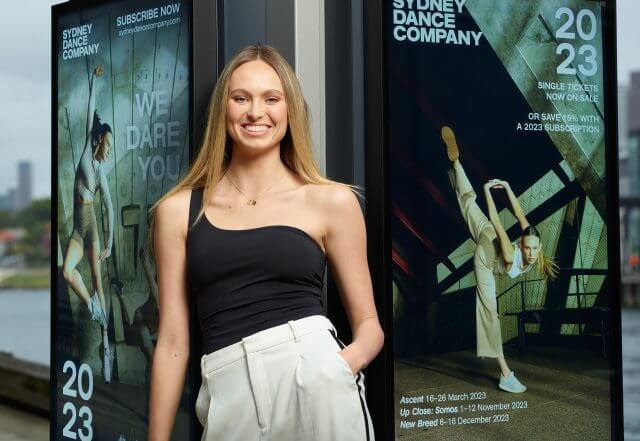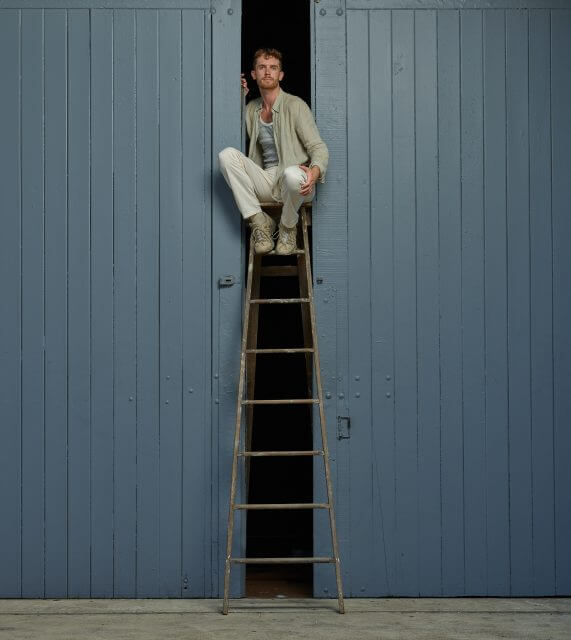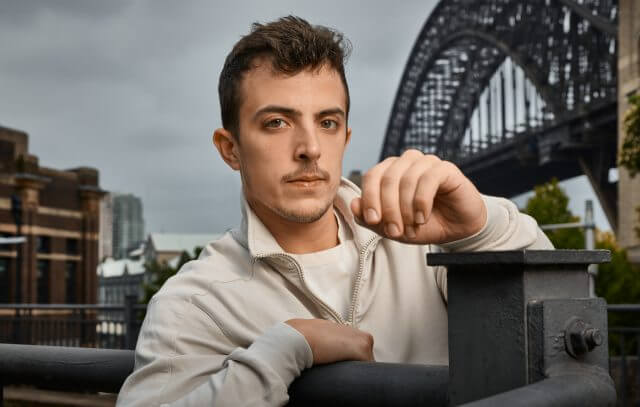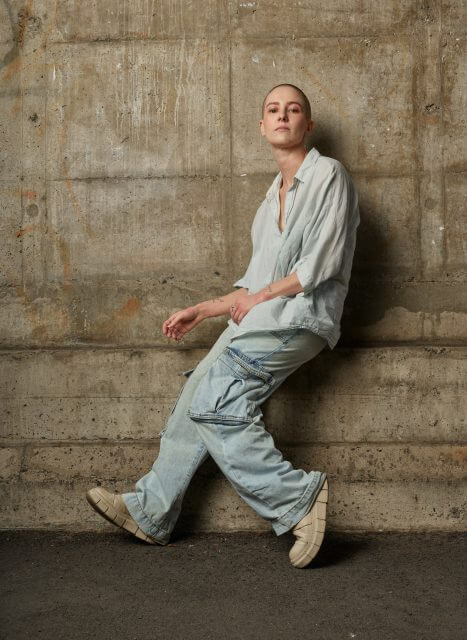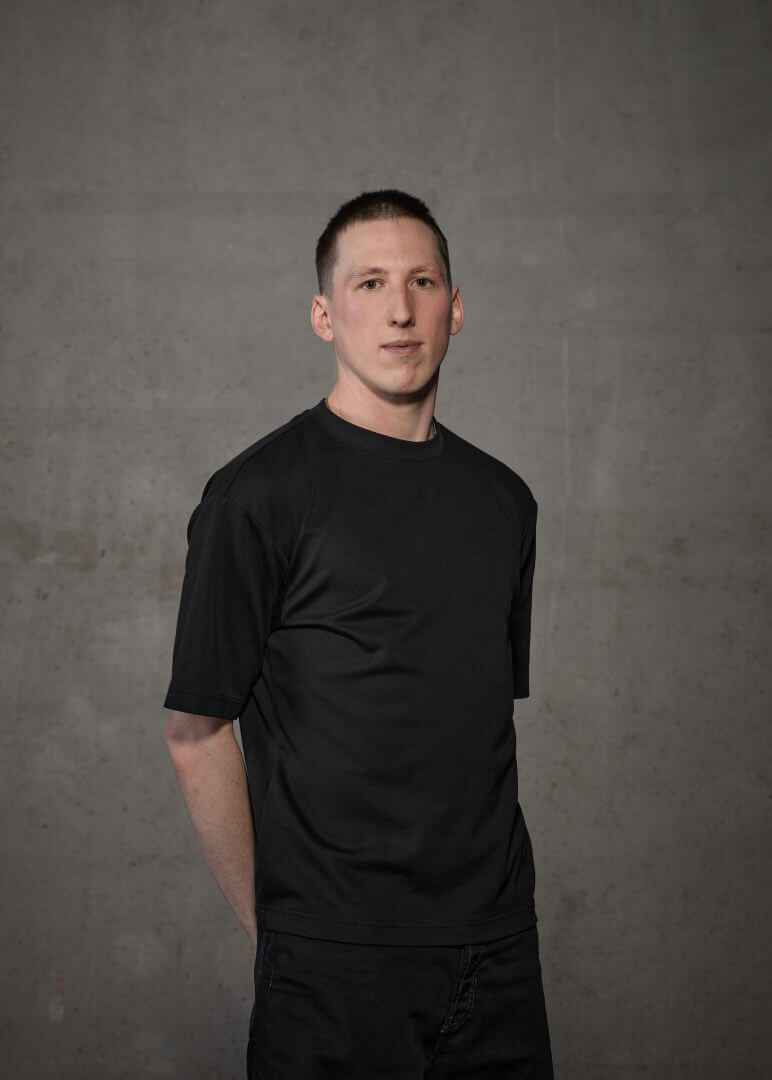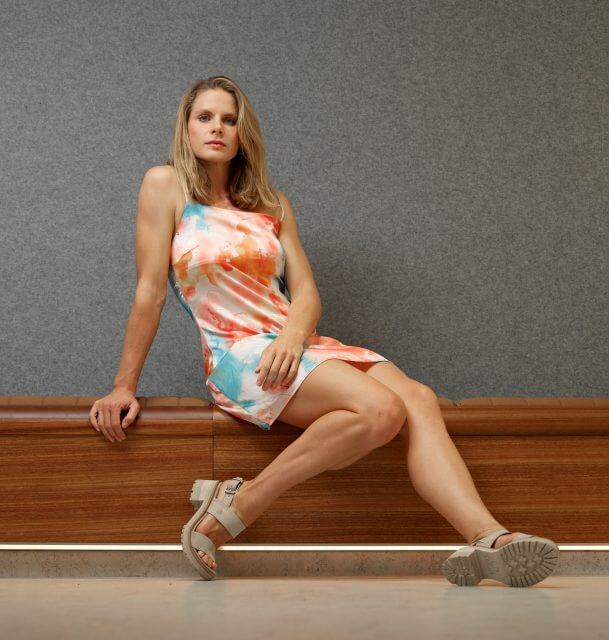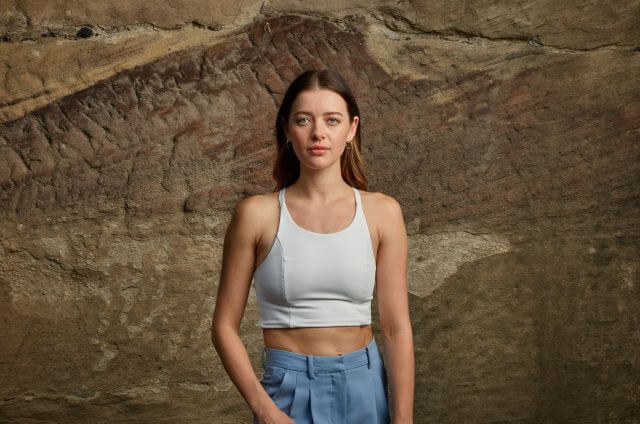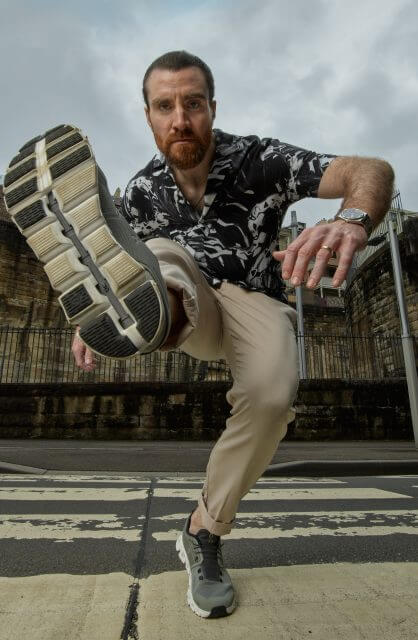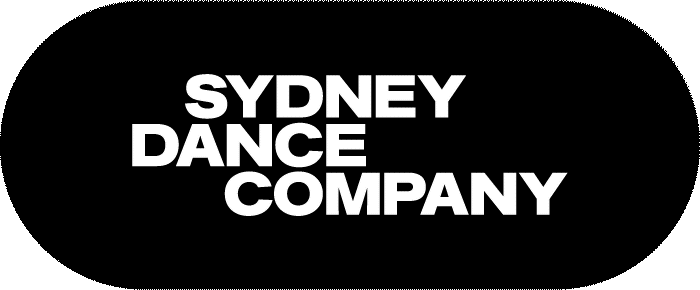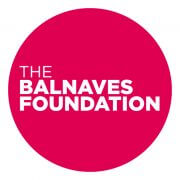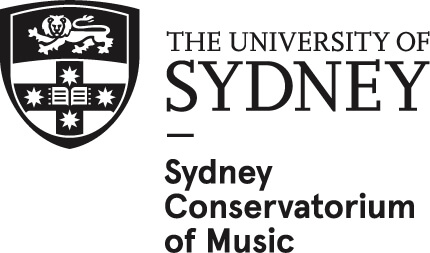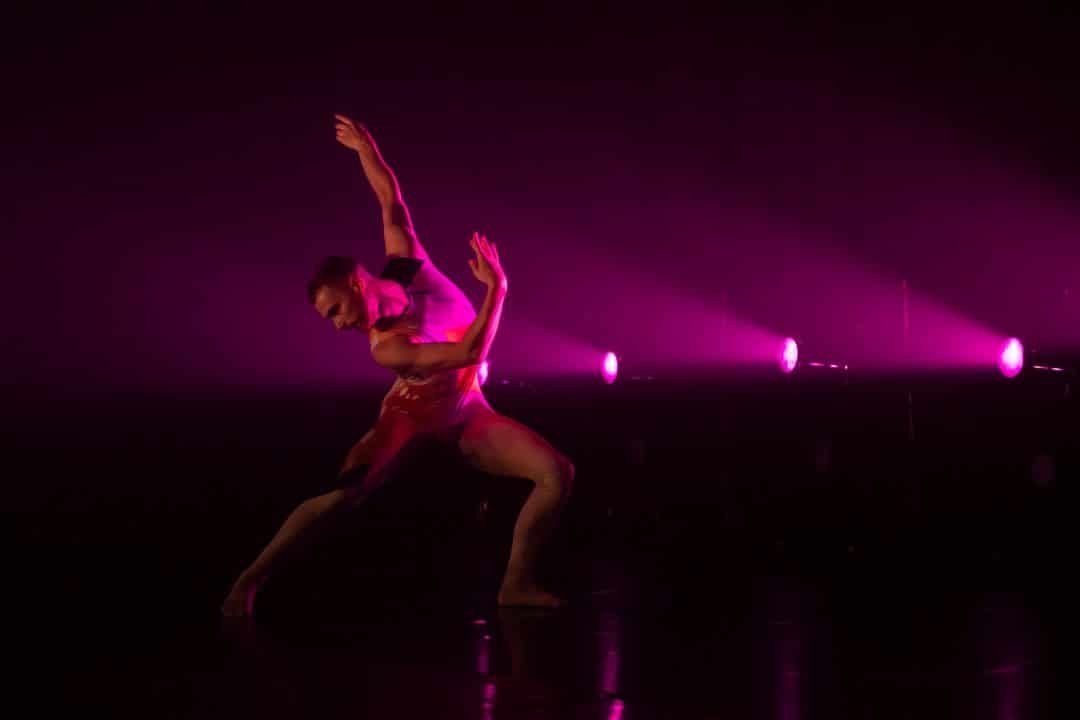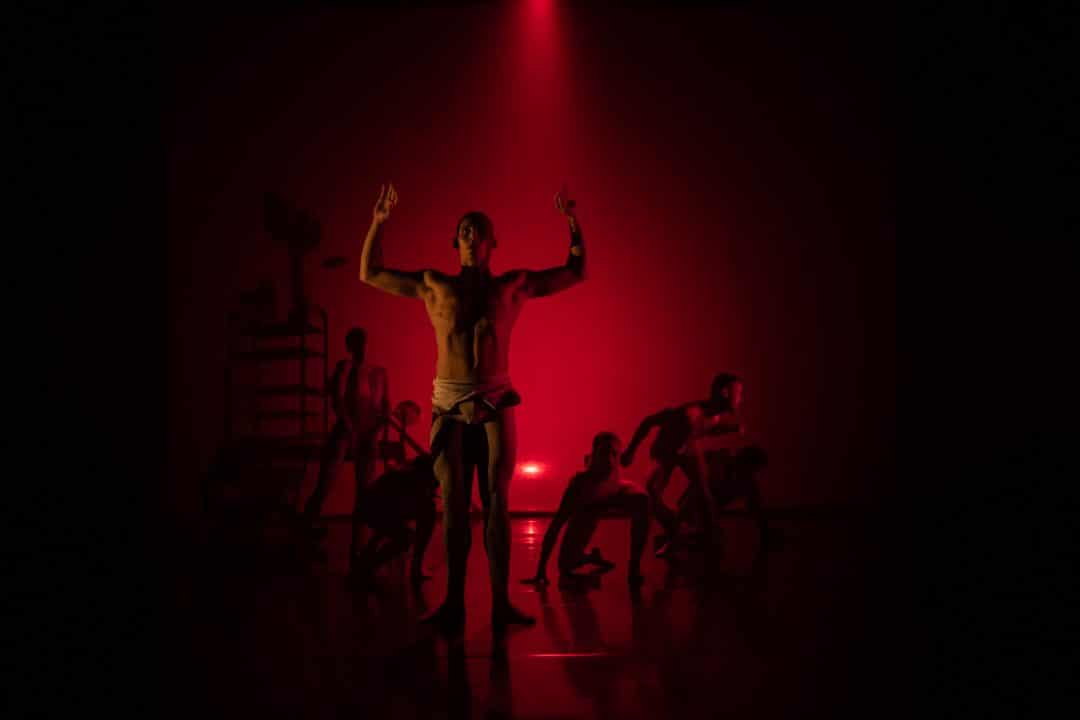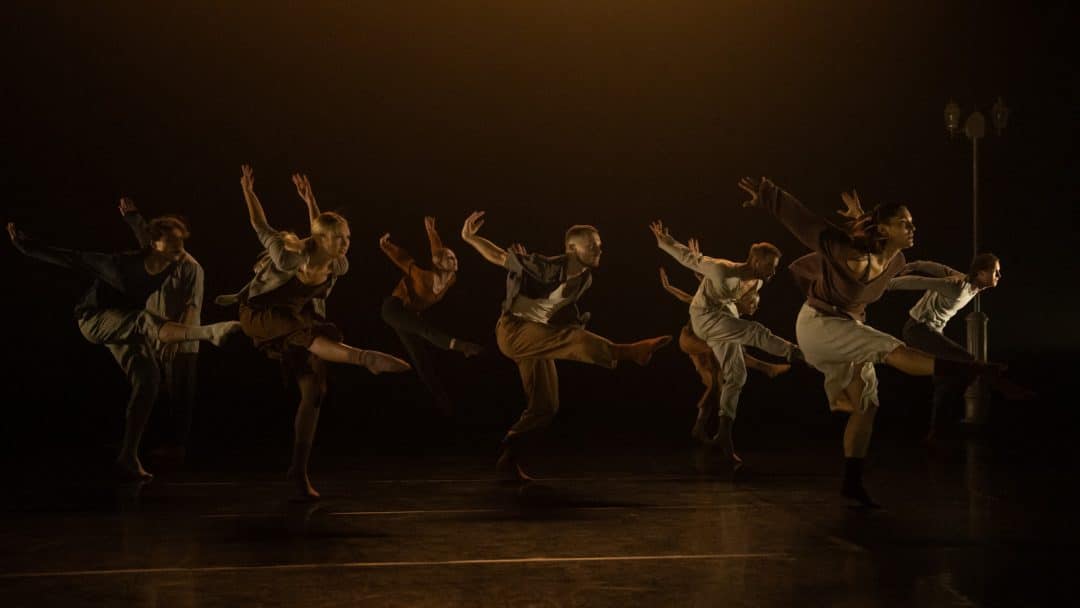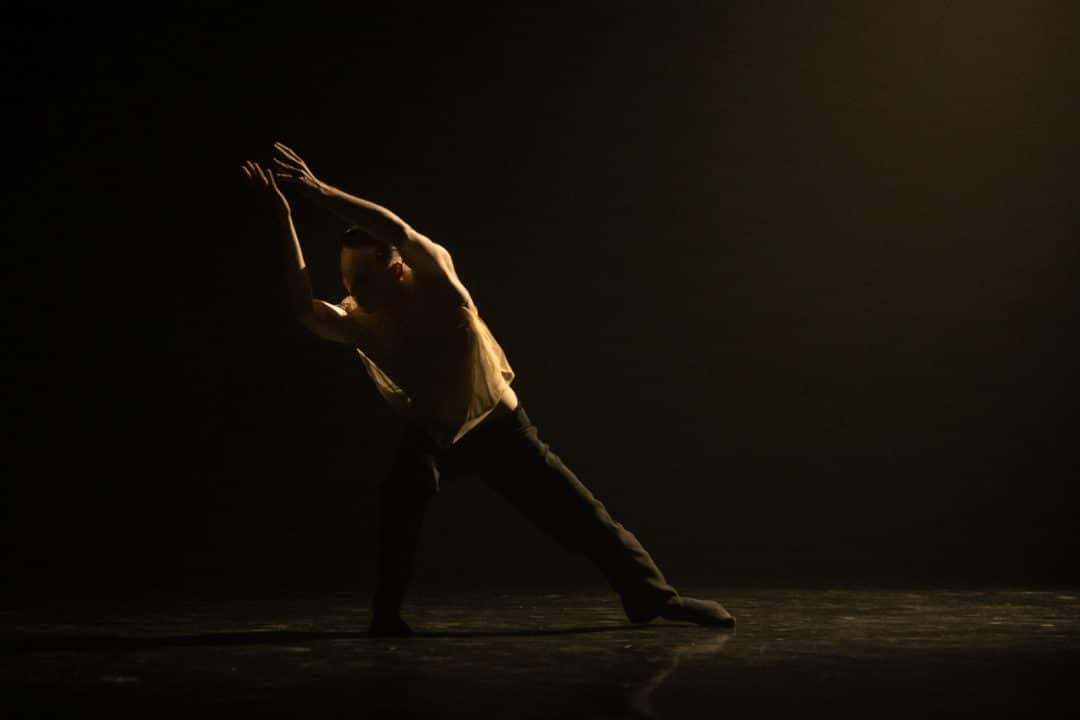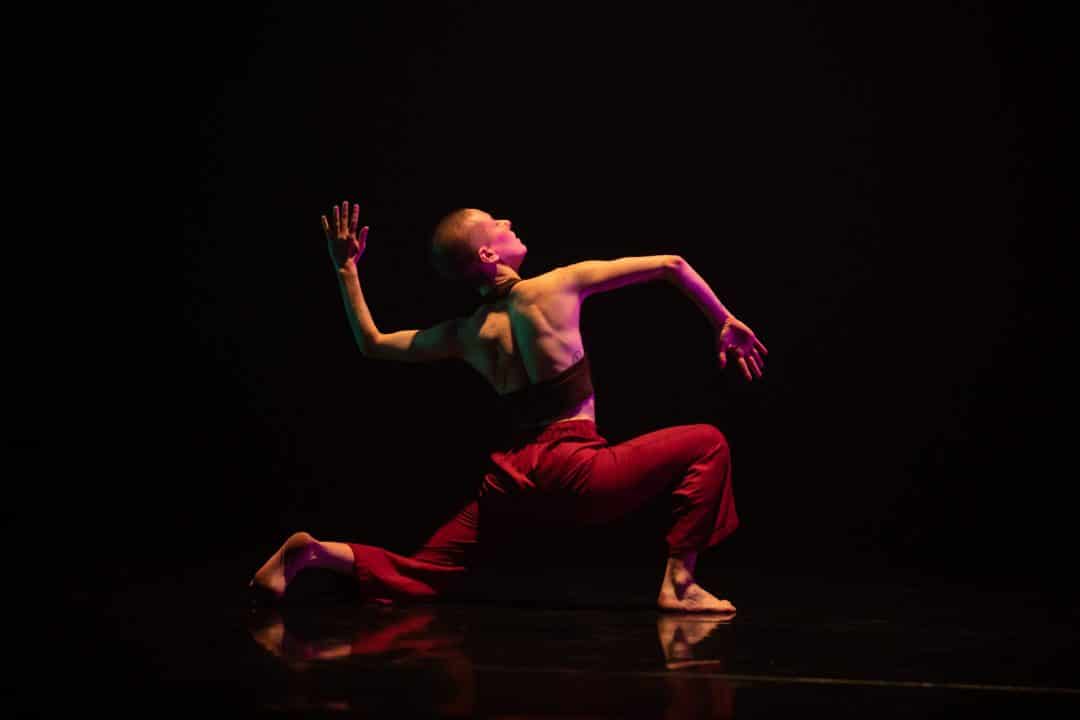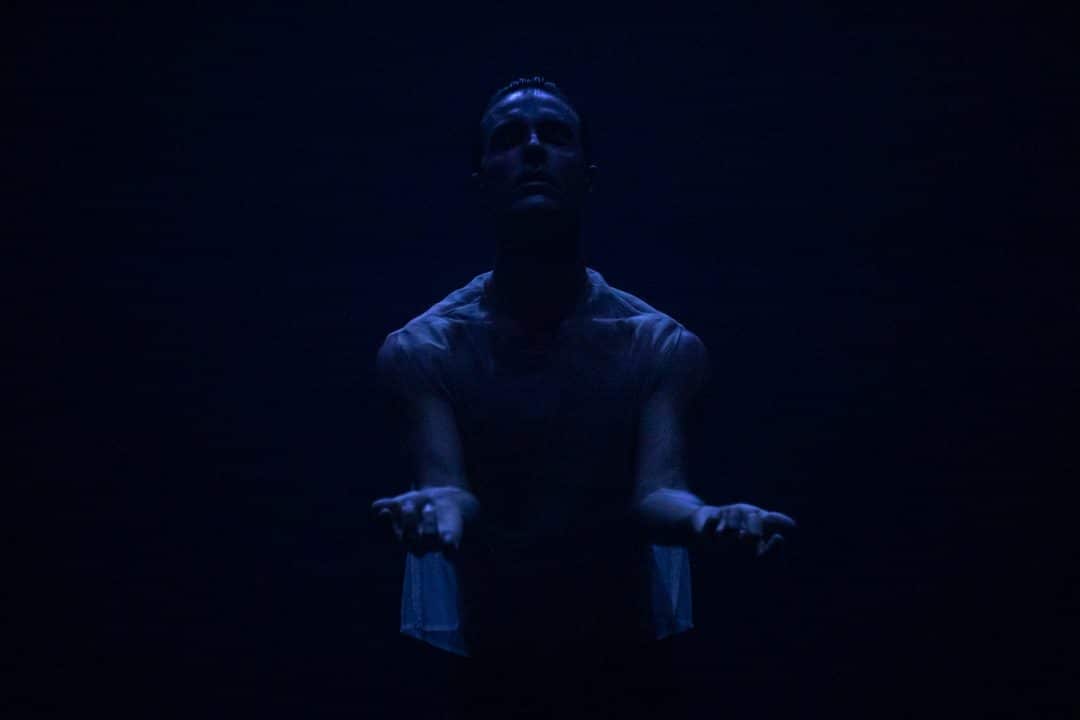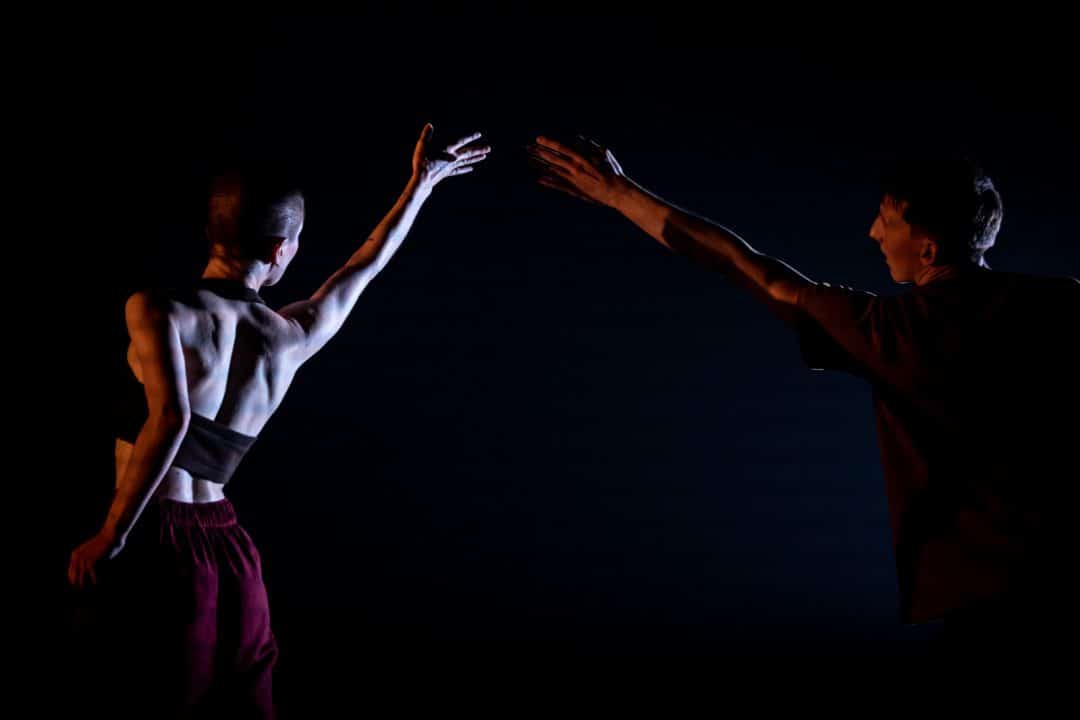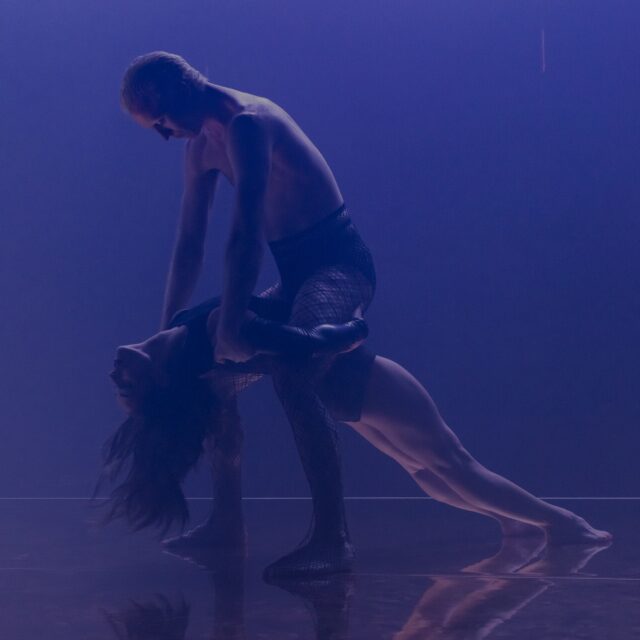
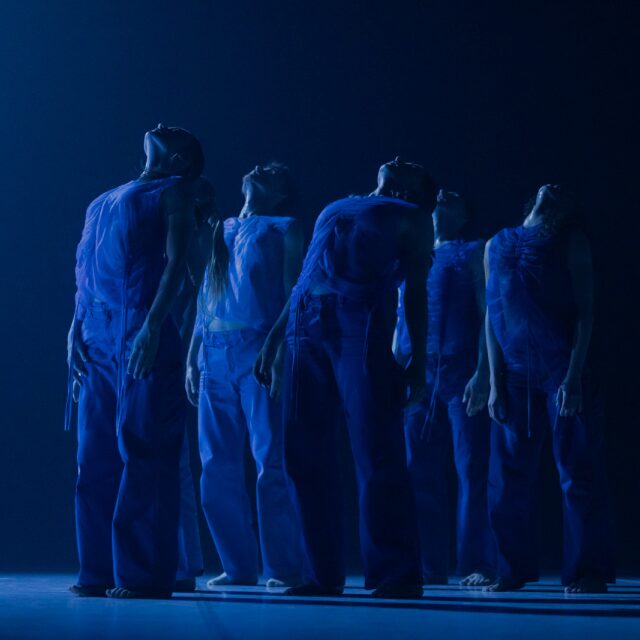
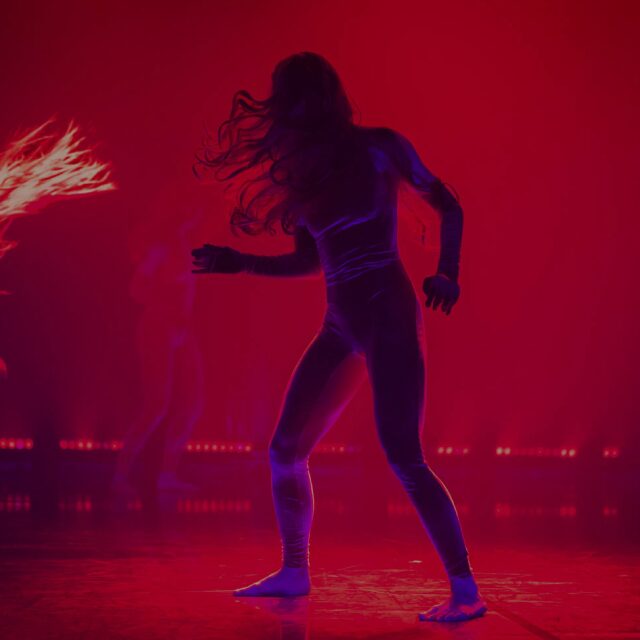
Information
Dates 26 Nov — 12 Dec
Location Carriageworks
Tickets $35 – $45
Duration 90 minutes
Warnings Haze, strobe/or strobe-like lighting effects, film content depicting cigarette smoking, and simulated cigarette smoking on stage. Latecomers will be admitted at a suitable break in the performance.
See Sydney Dance Company perform for the first time in 2020 and meet the new breed of Australian dance creators!
Sydney Dance Company will return to the stage at the end of November with New Breed, an annual celebration of the best emerging Australian choreography, in partnership with Carriageworks and generously supported by The Balnaves Foundation.
Showcasing a rich diversity of choreographic ideas, an incredibly talented group of choreographers have created Covid-safe, socially distanced new works on members of Sydney Dance Company; a true reflection of how art and creativity can respond to this unprecedented time and its impact on performance.
We’re thrilled to announce that the four New Breed choreographers this year are Joel Bray from Melbourne, Sydney-based Raghav Handa and Sydney Dance Company dancers Chloe Leong and Jesse Scales.
Don’t miss this limited season of raw talent and, unique fresh ideas from some of Australia’s most exciting dance creators.
New Breed is made possible by The Balnaves Foundation and co-presented with Carriageworks.
This year Sydney Dance Company welcomes a collaboration with the Sydney Conservatorium of Music’s Composing Women Program, and the participation of the Sydney Symphony Orchestra Fellowship.
Our first priority is always the health and safety of our audience. Covid safety measures will be in place for this performance season.
Content Warning
Please note the final piece in the program, Cult of the Titans, is an exploration of cultural appropriation of the swastika from Hindu culture. The work contains images of the swastika, intermittently projected for three minutes at the start of the work, and some militaristic choreography.
There will be a short break before this work begins, giving patrons the opportunity to leave the theatre if they wish.
Read the Artist Statements here.
Follow #2020SDC, #SDCkeepdancing
@SydneyDanceCo on Facebook, Instagram and Twitter.
Dates & Prices
Carriageworks
26 Nov — 12 Dec
Thu 26 Nov, 7.30pm (Opening Night)
Fri 27 Nov, 7.30pm
Sat 28 Nov, 7.30pm
Mon 30 Nov, 7:30pm
Tue 1 Dec, 7.30pm
Wed 2 Dec, 7.30pm
Thu 3 Dec, 7.30pm
Fri 4 Dec, 7.30pm
Sat 5 Dec, 2pm (Matinee)
Sat 5 Dec, 7.30pm
Wed 9 Dec, 7.30pm
Thu 10 Dec, 7.30pm
Fri 11 Dec, 7.30pm
Sat 12 Dec, 2pm (Matinee)
Sat 12 Dec, 7.30pm
Ticket Prices
Adult
$45
Concession
$35
Under 30
$35
Authorised ticket sellers
The only authorised ticket seller** for Single Tickets is Sydney Dance Company. Only tickets purchased by authorised agencies should be considered valid and reliable.
**Please note, only authorised ticket seller purchases should be considered valid. In accordance with Terms and Conditions, Sydney Dance Company reserves the right to cancel tickets purchased from a Third Party Website (reseller). The new ticket holder may be refused admission to the event.
For more information on purchasing tickets safely and securely, read Live Performance Australia’s Safe Tix Guide here.
COVID-safe FAQs
Your comfort and safety are of utmost importance to us and we want to ensure that the first time you see us perform in 2020 will be an amazing experience.
You will find the answers to some of your questions about attending the performance below. We will be issuing further guidelines and instructions regarding visiting Carriageworks for New Breed, and will keep you informed of any changes to regulations and procedures as they unfold.
If you have any further queries, please don’t hesitate to contact us. Please do call us on 9221 4811.
If you’re feeling unwell, please stay at home.
Please don’t come to the theatre if:
• You feel unwell
• You have experienced any cold or flu-like symptoms in the past 14 days
• You are awaiting the results of a COVID-19 test
• You have been in contact with someone who has tested positive to COVID-19, or is suspected of having it
• Have returned from overseas or a hotspot area in the past 14 days
Yes, please bring your own mask. From Friday 4 December, wearing a mask is required at all times in the Carriageworks performance spaces for patrons 12 years and older. By entering the Carriageworks public spaces you are agreeing to wear a mask inside the theatre: if you refuse to do so, you may be denied entry or asked to leave the venue.
All visitors are required by law to provide contact information for contact tracing. Carriageworks provides QR codes at entry so you can register with your phone. Please speak to a friendly Carriageworks staff member if you need assistance
For your safety, the cloakroom will be closed and large bags and equipment will not be permitted into the theatre. You may be denied entry if you are carrying a bag or item larger than A4.
Yes, please always practice physical distancing by maintaining a 1.5 metre distance from other people. For your safety, please avoid congregating in public areas, queue wherever indicated, and always follow instructions from Carriageworks staff.
Under NSW Government regulations you cannot stand while consuming alcohol. If the cafe is open during your visit, please take a seat in the public space after purchasing a drink or snack. Please note it is prohibited for the venue to provide water stations or disposable cups. Please bring a credit or debit card for any onsite purchases, as Carriageworks accept cashless payments only.
Our seating has been arranged to best comply with physical distancing requirements. This means that seating will be limited. Seats will be allocated and emailed to you prior to the performance. You can print this out, or have it handy on your phone, and an usher will direct you to your seat.
Carriageworks has implemented enhanced daily cleaning procedures across the precinct. This includes regular cleaning of high-touch surfaces throughout the day. Please be mindful of high traffic areas and keep touching to a minimum.
For your safety, please maintain good hand hygiene while at the venue and use the hand sanitiser provided at entry and throughout the site. Coughing or sneezing into your elbow or a tissue is encouraged.
If you are unable to attend the performance due to illness, contact with a suspected or confirmed COVID-19 case, or confirmed hotspot, ticket exchange options are available. Tickets may be refunded, exchanged for a credit voucher, or the value of the ticket can be donated to Sydney Dance Company as a tax-deductible donation. In response to the COVID-19 health crisis, we have temporarily removed fees for ticket exchanges.
Creatives
Inertia
Choreographer: Jesse Scales
Music: The Rocket Builder (Io Pan) – Jóhann Jóhannsson
Let My Key Be C – Nils Frahm, Anne Müller
Lighting Designer: Alexander Berlage
Costume Designer: Aleisa Jelbart
Nostalgia
Choreographer: Chloe Leong
Composer: Rob Campbell (The Nights)
Lighting Designer: Alexander Berlage
Costume Designer: Aleisa Jelbart
Wagan (Wiradjuri for ‘Raven’)
Choreographer: Joel Bray
Composer: Brenda Gifford (Sydney Conservatorium of Music, Composing Women 2020)
Arrangements & Sound-Designer: Tristan Coelho
Lighting Designer: Alexander Berlage
Costume Designer: Aleisa Jelbart
Cult of the Titans
Choreographer: Raghav Handa
Composer: James Brown
Rhythm and Tabla: Maharshi Raval
Outside Eye: Vicki Van Hout
Cultural Consultant: Shashi Handa
Lighting Designer: Alexander Berlage
Costume Designer: Aleisa Jelbart
Artist Statements
This is a moment of real life.
We may never know how we’ll act when confronted by a crisis. But whether victim or bystander, the power of inertia can be detrimental to any form of help.
The bystander; forever subject to the complicated interaction between our personal disposition and the demands of circumstance. Unknown pressures manifesting a diffusion of responsibility and pluralistic ignorance.
For the majority, we shy from action.
Why do we sometimes shackle our moral instincts? Is there a particular set of characteristics that make some more likely to act, while others remain passive? We are all active participants in life after all.
The truth is, only subtle differences separate the inert from the morally courageous. Most of us have the potential to fall into either category, with slight, seemingly insignificant details pushing us either way.
As for the objectified victim; they are at the mercy of those refusing to acknowledge and assist them. Unsure of how to communicate with their emotionally damming observers. Needing help, but getting none.
You let me go with a curt disregard, worthlessness forced upon. How could you? You icy blood. You tearless tempests.
Perhaps it’s an alteration of the conscience that forges the path to redemption. Because when one assists, more follow. Breaking the cycle and offering help, the pattern is reversed completely.
For both parties, one question remains. What are the instinctive and conditional decisions needed to be made to release us from this inertia?
All it takes, is one person to show their empathic side.
Nostalgia comes from two Greek words; nostos, meaning “to return home,” and algos, meaning “pain.”
“A paradoxical interplay of the definite and
the indefinite in spaces as well as in time that gives rise to nostalgia’s baffling combination of the sweet and the bitter, the personal and impersonal, distance and proximity, presence and absence, place and no-place, imagination and memory, memory and non-memory.”
Zoe Anne Laks (On longing for loss: a theory of cinematic memory and an aesthetics of nostalgia)
I was drawn to the idea of nostalgia as a part of the human condition across all people, across all times. It opens the mind to the possibilities within time, creates connections between spaces, and the constructions of our past become malleable, shape-shifting to the needs of the present moment. It can be vivid and vague, delicate but potent, subjective, temporal and strongly attached to emotion. A dopamine drip of sorts, it can take an individual bound by the present into a state of fantasy, an insular space that can give rise to both tension and reassurance.
I wanted to invoke the concept of nostalgia, through the relationship of the dancers, the movement, sound and space. It is not for the audience to understand by being literal but for the audience to experience feelings, sensations, atmospheres, details and human conditions that are universal, through their subjective lens.
To Nonno,
Whom I will always remember with the greatest love and nostalgia.
Wagan is the Wiradjuri word for crow, or raven. As a child, my father told me a story of how, once-upon-a-time, the crow was more beautifully rainbow-coloured than the lorikeet. But because of his pride, he was burnt in a fire and so now he is black. Many different mobs have versions of the same story.
In Wiradjuri culture, the Wagan is a wise creature: he is cheeky but smart. In the old stories, he is often the problem-solver. In stark contrast European culture is steeped in fear of the ‘Black’. Hitchcock’s iconic film The Birds epitomises this subtly racist fear.
20 years ago, almost to the day, I was out on Wiradjuri Country at dawn. I wandered out and saw a flock of birds swooping and playing amongst the naked limbs of a single tree on a hill. There seemed no Darwinian purpose to their actions; they were neither feeding nor breeding. They were dancing. It was in that moment, I decided to leave my university studies and to become a dancer. I have never looked back.
Set to Yuin composer Brenda Gifford’s sublime score, Wagan is a weaving of these three threads. It is simultaneously a personal history, a reclamation of a sacred totem and a re-imagining of an ancient story. My heartfelt thanks to these extraordinary dancers who co-created this work with me with such generosity and a beautiful sense of play. Together, we offer Wagan in Yindyamarra (honour) to the Elders and the Ancestors.
Dominant ideologies rely on provocative imagery to enliven beliefs – a set of symbols allowing the power to express itself visually, to showcase its appeal and aesthetics and, in many cases, to instil fear. In the 20th century, these symbols were often appropriated from other cultures and used to create fanaticism and cults with their own power and physical language. In this context, no image has been more misused and abused than the Hindu svastika – a symbol of peace and good fortune in India for millennia, the symbol of my family for generations – appropriated by fascists to orchestrate control and domination.
Cult of the Titans questions: how can I let the world know that fascism appropriated part of my cultural identity? How do I shed true light on a symbol many consider evil? Through this work I want to start a process to reclaim and re-sanctify a stolen symbol and “de-weaponise” its seductive pull.
For you, the svastika may be tarnished beyond redemption – a perpetual symbol of darkness. For me and mine, IT HAS ALWAYS BEEN GOLDEN!!
The imagery and physical language in this work is derived from family histories passed down to me by my mother – it is not a published or documented history. My family’s texts and stories have informed the imagery and physical language in this piece. By juxtaposing spiritual imagery with language usually associated with dominance, I try to address the elephant in the room.
The svastika for my family suggests the architecture or the complete plan of the universe (the “macrocosm”) and the anthropomorphic individual (the “microcosm”). Within the svastika’s mystical precincts lies the master-key which opens the door of every physical science and every concept of spirituality. It symbolises our human existence, the circle of life circumscribing the four points of the cross – birth, life, death and IMMORTALITY.
It is easy in modern culture to see things as “black and white” but sometimes there is another perspective and embracing that perspective can expose the darkness. If I fail to start the conversation, however hard that conversation might be, then the usurper wins. Dance is my language and the place to start my conversation.
It is important to state explicitly that Nazi Germany appropriated the swastika, which came to represent the regime which carried out a genocide against the Jewish people and murdered six million Jews, as well as targeting homosexuals, Roma and people with disabilities.
In addition, 27,000 Australian soldiers lost their lives fighting that regime during the course of World War II. There should be no skirting around these truths or softening the import of what the Nazi swastika represents and represented.
Sydney Dance Company owes a sincere debt of gratitude to Vic Alhadeff, Chief Executive Officer of the NSW Jewish Board of Deputies for his consultation, and endorsement of the value of the discussion around this important topic.
Media and Audience Reviews
★★★★ “Four very different works by Jesse Scales, Chloe Leong, Joel Bray and Raghav Handa make for an absorbing evening.” – Limelight Magazine
★★★★ “It is magnetic. You can’t tear your gaze away…”” – Limelight Magazine
★★★★ “A stimulating example of the way dance can tackle interesting and often unlikely themes.” – The Sydney Morning Herald
★★★★ “Sydney Dance Company’s dancers have re-emerged as technically stunning and emotionally compelling as ever…” – Bachtrack
“The program opened with Inertia, a work by Company dancer Jesse Scales which was intriguing and well structured… I would happily watch this again.” – Dance Australia
“These are truly exciting, beautiful four works. Every piece had a real sense of intimacy… All the dancers are tremendously convincing and stunning in their deep commitment to authentic movement. I felt moved, challenged, inspired, often surprised. All pieces were very powerful in their intentions and messages.” – Esme K, Audience Member.
Information
Dates 26 Nov — 12 Dec
Location Carriageworks
Tickets $35 – $45
Duration 90 minutes
Warnings Haze, strobe/or strobe-like lighting effects, film content depicting cigarette smoking, and simulated cigarette smoking on stage. Latecomers will be admitted at a suitable break in the performance.
See Sydney Dance Company perform for the first time in 2020 and meet the new breed of Australian dance creators!
Sydney Dance Company will return to the stage at the end of November with New Breed, an annual celebration of the best emerging Australian choreography, in partnership with Carriageworks and generously supported by The Balnaves Foundation.
Showcasing a rich diversity of choreographic ideas, an incredibly talented group of choreographers have created Covid-safe, socially distanced new works on members of Sydney Dance Company; a true reflection of how art and creativity can respond to this unprecedented time and its impact on performance.
We’re thrilled to announce that the four New Breed choreographers this year are Joel Bray from Melbourne, Sydney-based Raghav Handa and Sydney Dance Company dancers Chloe Leong and Jesse Scales.
Don’t miss this limited season of raw talent and, unique fresh ideas from some of Australia’s most exciting dance creators.
New Breed is made possible by The Balnaves Foundation and co-presented with Carriageworks.
This year Sydney Dance Company welcomes a collaboration with the Sydney Conservatorium of Music’s Composing Women Program, and the participation of the Sydney Symphony Orchestra Fellowship.
Our first priority is always the health and safety of our audience. Covid safety measures will be in place for this performance season.
Content Warning
Please note the final piece in the program, Cult of the Titans, is an exploration of cultural appropriation of the swastika from Hindu culture. The work contains images of the swastika, intermittently projected for three minutes at the start of the work, and some militaristic choreography.
There will be a short break before this work begins, giving patrons the opportunity to leave the theatre if they wish.
Read the Artist Statements here.
Follow #2020SDC, #SDCkeepdancing
@SydneyDanceCo on Facebook, Instagram and Twitter.
Dates & Prices
Carriageworks
26 Nov — 12 Dec
Thu 26 Nov, 7.30pm (Opening Night)
Fri 27 Nov, 7.30pm
Sat 28 Nov, 7.30pm
Mon 30 Nov, 7:30pm
Tue 1 Dec, 7.30pm
Wed 2 Dec, 7.30pm
Thu 3 Dec, 7.30pm
Fri 4 Dec, 7.30pm
Sat 5 Dec, 2pm (Matinee)
Sat 5 Dec, 7.30pm
Wed 9 Dec, 7.30pm
Thu 10 Dec, 7.30pm
Fri 11 Dec, 7.30pm
Sat 12 Dec, 2pm (Matinee)
Sat 12 Dec, 7.30pm
Ticket Prices
Adult
$45
Concession
$35
Under 30
$35
Authorised ticket sellers
The only authorised ticket seller** for Single Tickets is Sydney Dance Company. Only tickets purchased by authorised agencies should be considered valid and reliable.
**Please note, only authorised ticket seller purchases should be considered valid. In accordance with Terms and Conditions, Sydney Dance Company reserves the right to cancel tickets purchased from a Third Party Website (reseller). The new ticket holder may be refused admission to the event.
For more information on purchasing tickets safely and securely, read Live Performance Australia’s Safe Tix Guide here.
COVID-safe FAQs
Your comfort and safety are of utmost importance to us and we want to ensure that the first time you see us perform in 2020 will be an amazing experience.
You will find the answers to some of your questions about attending the performance below. We will be issuing further guidelines and instructions regarding visiting Carriageworks for New Breed, and will keep you informed of any changes to regulations and procedures as they unfold.
If you have any further queries, please don’t hesitate to contact us. Please do call us on 9221 4811.
If you’re feeling unwell, please stay at home.
Please don’t come to the theatre if:
• You feel unwell
• You have experienced any cold or flu-like symptoms in the past 14 days
• You are awaiting the results of a COVID-19 test
• You have been in contact with someone who has tested positive to COVID-19, or is suspected of having it
• Have returned from overseas or a hotspot area in the past 14 days
Yes, please bring your own mask. From Friday 4 December, wearing a mask is required at all times in the Carriageworks performance spaces for patrons 12 years and older. By entering the Carriageworks public spaces you are agreeing to wear a mask inside the theatre: if you refuse to do so, you may be denied entry or asked to leave the venue.
All visitors are required by law to provide contact information for contact tracing. Carriageworks provides QR codes at entry so you can register with your phone. Please speak to a friendly Carriageworks staff member if you need assistance
For your safety, the cloakroom will be closed and large bags and equipment will not be permitted into the theatre. You may be denied entry if you are carrying a bag or item larger than A4.
Yes, please always practice physical distancing by maintaining a 1.5 metre distance from other people. For your safety, please avoid congregating in public areas, queue wherever indicated, and always follow instructions from Carriageworks staff.
Under NSW Government regulations you cannot stand while consuming alcohol. If the cafe is open during your visit, please take a seat in the public space after purchasing a drink or snack. Please note it is prohibited for the venue to provide water stations or disposable cups. Please bring a credit or debit card for any onsite purchases, as Carriageworks accept cashless payments only.
Our seating has been arranged to best comply with physical distancing requirements. This means that seating will be limited. Seats will be allocated and emailed to you prior to the performance. You can print this out, or have it handy on your phone, and an usher will direct you to your seat.
Carriageworks has implemented enhanced daily cleaning procedures across the precinct. This includes regular cleaning of high-touch surfaces throughout the day. Please be mindful of high traffic areas and keep touching to a minimum.
For your safety, please maintain good hand hygiene while at the venue and use the hand sanitiser provided at entry and throughout the site. Coughing or sneezing into your elbow or a tissue is encouraged.
If you are unable to attend the performance due to illness, contact with a suspected or confirmed COVID-19 case, or confirmed hotspot, ticket exchange options are available. Tickets may be refunded, exchanged for a credit voucher, or the value of the ticket can be donated to Sydney Dance Company as a tax-deductible donation. In response to the COVID-19 health crisis, we have temporarily removed fees for ticket exchanges.
Creatives
Inertia
Choreographer: Jesse Scales
Music: The Rocket Builder (Io Pan) – Jóhann Jóhannsson
Let My Key Be C – Nils Frahm, Anne Müller
Lighting Designer: Alexander Berlage
Costume Designer: Aleisa Jelbart
Nostalgia
Choreographer: Chloe Leong
Composer: Rob Campbell (The Nights)
Lighting Designer: Alexander Berlage
Costume Designer: Aleisa Jelbart
Wagan (Wiradjuri for ‘Raven’)
Choreographer: Joel Bray
Composer: Brenda Gifford (Sydney Conservatorium of Music, Composing Women 2020)
Arrangements & Sound-Designer: Tristan Coelho
Lighting Designer: Alexander Berlage
Costume Designer: Aleisa Jelbart
Cult of the Titans
Choreographer: Raghav Handa
Composer: James Brown
Rhythm and Tabla: Maharshi Raval
Outside Eye: Vicki Van Hout
Cultural Consultant: Shashi Handa
Lighting Designer: Alexander Berlage
Costume Designer: Aleisa Jelbart
Artist Statements
This is a moment of real life.
We may never know how we’ll act when confronted by a crisis. But whether victim or bystander, the power of inertia can be detrimental to any form of help.
The bystander; forever subject to the complicated interaction between our personal disposition and the demands of circumstance. Unknown pressures manifesting a diffusion of responsibility and pluralistic ignorance.
For the majority, we shy from action.
Why do we sometimes shackle our moral instincts? Is there a particular set of characteristics that make some more likely to act, while others remain passive? We are all active participants in life after all.
The truth is, only subtle differences separate the inert from the morally courageous. Most of us have the potential to fall into either category, with slight, seemingly insignificant details pushing us either way.
As for the objectified victim; they are at the mercy of those refusing to acknowledge and assist them. Unsure of how to communicate with their emotionally damming observers. Needing help, but getting none.
You let me go with a curt disregard, worthlessness forced upon. How could you? You icy blood. You tearless tempests.
Perhaps it’s an alteration of the conscience that forges the path to redemption. Because when one assists, more follow. Breaking the cycle and offering help, the pattern is reversed completely.
For both parties, one question remains. What are the instinctive and conditional decisions needed to be made to release us from this inertia?
All it takes, is one person to show their empathic side.
Nostalgia comes from two Greek words; nostos, meaning “to return home,” and algos, meaning “pain.”
“A paradoxical interplay of the definite and
the indefinite in spaces as well as in time that gives rise to nostalgia’s baffling combination of the sweet and the bitter, the personal and impersonal, distance and proximity, presence and absence, place and no-place, imagination and memory, memory and non-memory.”
Zoe Anne Laks (On longing for loss: a theory of cinematic memory and an aesthetics of nostalgia)
I was drawn to the idea of nostalgia as a part of the human condition across all people, across all times. It opens the mind to the possibilities within time, creates connections between spaces, and the constructions of our past become malleable, shape-shifting to the needs of the present moment. It can be vivid and vague, delicate but potent, subjective, temporal and strongly attached to emotion. A dopamine drip of sorts, it can take an individual bound by the present into a state of fantasy, an insular space that can give rise to both tension and reassurance.
I wanted to invoke the concept of nostalgia, through the relationship of the dancers, the movement, sound and space. It is not for the audience to understand by being literal but for the audience to experience feelings, sensations, atmospheres, details and human conditions that are universal, through their subjective lens.
To Nonno,
Whom I will always remember with the greatest love and nostalgia.
Wagan is the Wiradjuri word for crow, or raven. As a child, my father told me a story of how, once-upon-a-time, the crow was more beautifully rainbow-coloured than the lorikeet. But because of his pride, he was burnt in a fire and so now he is black. Many different mobs have versions of the same story.
In Wiradjuri culture, the Wagan is a wise creature: he is cheeky but smart. In the old stories, he is often the problem-solver. In stark contrast European culture is steeped in fear of the ‘Black’. Hitchcock’s iconic film The Birds epitomises this subtly racist fear.
20 years ago, almost to the day, I was out on Wiradjuri Country at dawn. I wandered out and saw a flock of birds swooping and playing amongst the naked limbs of a single tree on a hill. There seemed no Darwinian purpose to their actions; they were neither feeding nor breeding. They were dancing. It was in that moment, I decided to leave my university studies and to become a dancer. I have never looked back.
Set to Yuin composer Brenda Gifford’s sublime score, Wagan is a weaving of these three threads. It is simultaneously a personal history, a reclamation of a sacred totem and a re-imagining of an ancient story. My heartfelt thanks to these extraordinary dancers who co-created this work with me with such generosity and a beautiful sense of play. Together, we offer Wagan in Yindyamarra (honour) to the Elders and the Ancestors.
Dominant ideologies rely on provocative imagery to enliven beliefs – a set of symbols allowing the power to express itself visually, to showcase its appeal and aesthetics and, in many cases, to instil fear. In the 20th century, these symbols were often appropriated from other cultures and used to create fanaticism and cults with their own power and physical language. In this context, no image has been more misused and abused than the Hindu svastika – a symbol of peace and good fortune in India for millennia, the symbol of my family for generations – appropriated by fascists to orchestrate control and domination.
Cult of the Titans questions: how can I let the world know that fascism appropriated part of my cultural identity? How do I shed true light on a symbol many consider evil? Through this work I want to start a process to reclaim and re-sanctify a stolen symbol and “de-weaponise” its seductive pull.
For you, the svastika may be tarnished beyond redemption – a perpetual symbol of darkness. For me and mine, IT HAS ALWAYS BEEN GOLDEN!!
The imagery and physical language in this work is derived from family histories passed down to me by my mother – it is not a published or documented history. My family’s texts and stories have informed the imagery and physical language in this piece. By juxtaposing spiritual imagery with language usually associated with dominance, I try to address the elephant in the room.
The svastika for my family suggests the architecture or the complete plan of the universe (the “macrocosm”) and the anthropomorphic individual (the “microcosm”). Within the svastika’s mystical precincts lies the master-key which opens the door of every physical science and every concept of spirituality. It symbolises our human existence, the circle of life circumscribing the four points of the cross – birth, life, death and IMMORTALITY.
It is easy in modern culture to see things as “black and white” but sometimes there is another perspective and embracing that perspective can expose the darkness. If I fail to start the conversation, however hard that conversation might be, then the usurper wins. Dance is my language and the place to start my conversation.
It is important to state explicitly that Nazi Germany appropriated the swastika, which came to represent the regime which carried out a genocide against the Jewish people and murdered six million Jews, as well as targeting homosexuals, Roma and people with disabilities.
In addition, 27,000 Australian soldiers lost their lives fighting that regime during the course of World War II. There should be no skirting around these truths or softening the import of what the Nazi swastika represents and represented.
Sydney Dance Company owes a sincere debt of gratitude to Vic Alhadeff, Chief Executive Officer of the NSW Jewish Board of Deputies for his consultation, and endorsement of the value of the discussion around this important topic.
Media and Audience Reviews
★★★★ “Four very different works by Jesse Scales, Chloe Leong, Joel Bray and Raghav Handa make for an absorbing evening.” – Limelight Magazine
★★★★ “It is magnetic. You can’t tear your gaze away…”” – Limelight Magazine
★★★★ “A stimulating example of the way dance can tackle interesting and often unlikely themes.” – The Sydney Morning Herald
★★★★ “Sydney Dance Company’s dancers have re-emerged as technically stunning and emotionally compelling as ever…” – Bachtrack
“The program opened with Inertia, a work by Company dancer Jesse Scales which was intriguing and well structured… I would happily watch this again.” – Dance Australia
“These are truly exciting, beautiful four works. Every piece had a real sense of intimacy… All the dancers are tremendously convincing and stunning in their deep commitment to authentic movement. I felt moved, challenged, inspired, often surprised. All pieces were very powerful in their intentions and messages.” – Esme K, Audience Member.
